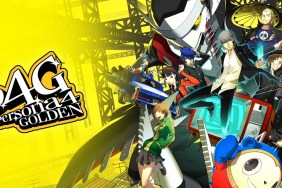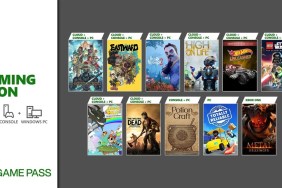Through me, the way to to the city of Whoa.
Chris Hudak Grills Jonathan Knight (Executive Producer, Dante’s Inferno)
Chris Hudak (GR Executive Vodka Sponge): Obviously, one has to take a lot of liberties with the subject matter—an alternate take on the Inferno of Dante’s Divine Comedy—in order to make a playable and good game. When designing Dante’s Inferno, what were some of the design “lines” you decided to cross (Cross?) or not, in the name of gameplay? How important did you feel it was—while first and foremost delivering an enjoyable gaming experience, of course—to adhere to the spirit, plot points, etc., of the inspirational subject matter?
[image1]Jonathan Knight: The original poem contains such an incredible wealth of imagination, particularly when it comes to the setting and the characters, that we tried to be fairly literal in bringing the geography of hell to life as Dante Alighieri envisioned it. Where we had to take some liberties was with the story itself. In making a game, we needed to weave a new plot—one that involves the familiar characters of Dante and Beatrice—but one that fuels drama and conflict. We needed to give Dante a reason to be fighting, fighting through the nine circles of hell to save a beautiful woman.
CH: Without giving too much away, what were the greatest technical challenges in the design of this game? It seems the automatic response is to superficially compare Dante’s Inferno to the God of War series, but let’s hear about the elements that distinguish it from existing games, and what will make it new and compelling.
JK: Well, one of the biggest technical challenges was to maintain a constant 60 frames per second, and we think this really separates us from a lot of the pack. Beyond that, we dove pretty deep into what we call the Righteousness system, giving players the ability to either punish or absolve their enemies and the damned souls they encounter. This in turn earns them holy and unholy experience, which will eventually level them up down either path, and open up new powers and abilities.
CH: How much weight (indeed, if any at all) was given to the possibility, or certainty, of certain groups out there taking offense at the ‘religious’ nature of the game’s subject matter (or at least, the game’s ‘location’)? In the end, was it much ado about nothing? Did you find yourself wanting to include—or having to scrap—elements of the game due to a “well, they’re not gonna allow us to get away with that” mindset?
JK: No, not at all. First, to be frank, there just hasn’t been much protest around the religious content—most of the controversy comes from the fact that we’ve had to change certain elements of the original material. And second, at Visceral Games we have been given great creative latitude in making the game we wanted to make, with the content that we think is appropriate to the fantasy laid out in The Divine Comedy. This 700-year-old poem is well known to be an allegory and a work of fiction, and I think everyone who looks at it closely understands that.
[image2]CH: Can you talk in any detail about which Circles or other Inferno ‘touchstones’ were the most difficult to present, or to translate to meaningful gameplay? Use the back of the Internet if necessary.
JK: We found it challenge to imagine Lust, Gluttony, and Greed, to be honest. Those circles are glossed over fairly quickly in the poem, but in order to make a continuous adventure through the nine circles, we had to fill in the blanks and imagine the full geography of these levels. Fortunately, we worked with some amazing conceptual artists—most notably Wayne Barlowe—who helped us push boundaries and imagine full worlds made out of those sins.
CH: It’s hard to think about such a game project and not automatically think about the fun you’d have devising all the attendant viral-marketing goodies. Can you talk about some of these, and which were your favorite, and which caused the most potential ‘friction’?
JK: The marketing campaign has been a lot of fun to watch unfold, and there are some incredibly bold and imaginative people working on it. First, just so everyone knows, the whole goal of the campaign (which we call the “nine months of hell”) is to educate people about the nine sins and the nine circles of hell. This is a uniquely Dante concept; he literally invents this notion of nine rings, descending to the center of the earth. We wanted people to get a refresher on what those sins are, and how Dante conceived of hell. My favorite so far is probably the Rick-Roll stunt we did for Anger month, because it literally forced people to commit an act of anger on camera. Plus, it just got so many good laughs.
CH: Can you talk a bit about the actual, functional mechanics of ‘condemning’ or ‘damning’ foes in the game, how often these opportunities arise, and what effect they’ll have on gameplay?
JK: Punishing and absolving is something you do quite frequently in the game, [and] we worked it into the fast-paced combat system. For most enemies, when you wear them down and grab them, you’re given the choice in that split-second moment, and the choice determines how you finish them off either by absolving them with the cross or punishing them with the deadly brutal scythe. Those play-style choices feed your Holy and/or Unholy meters over time, and you level up one path or the other (or both).
You also have opportunities to earn Holy and Unholy experience when you encounter the damned. These souls are found less frequently, in non-combat areas, and they are characters that come from the poem—like Dante’s Florentine friends and rivals, or various political figures. You can read what their sins were in life, and they talk to you and give you some background. Armed with a little more knowledge of their transgression, you decide whether to punish or absolve.
[image3]CH: So, you wake up on launch day….and damned if you don’t find yourself sitting in the Vestibule, with no warning or explanation. We’re not exactly expecting you’ll give us any damning specifics, from your real lives for all the Internet to see, but… which Circle are you probably headed for? If that’s too touchy, which one do you most want to see (not populate), and why?
JK: Me? You’d probably find me in most of them 🙂
CH: There’s a school of thought out there contending that, since Dante penned The Divine Comedy, mankind has cooked up new sins, transgressions, grey-areas ,and social evils that aren’t neatly covered by the Nine Circles (some of them quite petty and annoying). What do you see as some of the evils of the modern world that Dante couldn’t have foreseen… and where would you send the perpetrators of such? Pet peeves of all sizes welcome here.
JK: In all honesty, I think Dante really covered the bases. He broke hell into two main categories: the sins of the flesh and the sins of malice. Or, sins you commit against yourself (the “victimless” sins) and sins you purposefully plan and plot to commit against others. In the book, the sins of malice are the most offensive, and people like liars, hypocrites, and traitors are punished the most severely of all sinners in the universe. I think that is a powerful and modern message, and we probably still haven’t caught up to Dante’s way of thinking.
CH: If you had a chance to lay down some Game Design Thou Shalt Nots of your own, what would they be? Higher numbers, more chances to win!
JK:
Thou Shalt Not run at less than 60 frames per second…
Thou Shalt Not bore players by repeating the same game mechanic over and over…
Thou Shalt Not force players to replay the same environments…
Thou Shalt Not short-change players on special features…
Thou Shalt Not deliver less than AAA cinematics to tell a story based upon such a revered classic…
Thou Shalt Not skimp on awesomeness…
I think Dante’s Inferno obeys these commandments quite well!











